TLDR A baby with KID syndrome died from infections and organ failure at 18 months old.
A 7-month-old boy with a history of progressive generalized exanthema, developmental delays, and failure to thrive was diagnosed with keratitis-ichthyosis-deafness (KID) syndrome, a rare condition characterized by skin, eye, and hearing abnormalities. Despite various treatments, his condition persisted, and he exhibited symptoms such as erythroderma, keratotic plaques, palmoplantar keratoderma, alopecia, and nail dystrophy. Laboratory tests revealed high white blood cell and eosinophil counts, elevated IgE levels, and positive cultures for Candida albicans, Candida tropicalis, and Staphylococcus aureus. A de novo heterozygous variant in the GJB2 gene was identified through whole exome sequencing, confirming the diagnosis of KID syndrome. The patient's condition deteriorated, leading to hospital admissions for severe skin and respiratory infections, and ultimately, he succumbed to multidrug-resistant septic shock and multiorgan failure at 18 months of age. The case underscores the importance of early recognition and genetic evaluation of severe cutaneous manifestations in infants, as well as the challenges in managing syndromic ichthyosis.
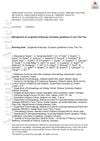 66 citations
,
June 2018 in “British Journal of Dermatology”
66 citations
,
June 2018 in “British Journal of Dermatology” European guidelines recommend regular eye and ear exams, skin care, vitamin D supplements, and cautious use of medications for managing congenital ichthyoses.
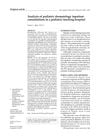 10 citations
,
October 2017 in “Archivos Argentinos De Pediatria”
10 citations
,
October 2017 in “Archivos Argentinos De Pediatria” Most hospitalized children with skin issues were boys, with allergic skin diseases like atopic dermatitis being most common, and treatments were usually topical.
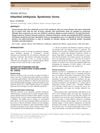 47 citations
,
March 2016 in “Journal of dermatology”
47 citations
,
March 2016 in “Journal of dermatology” Understanding the genetics of rare inherited ichthyosis syndromes is key for better treatments and genetic counseling.
34 citations
,
September 2010 in “Clinical and Experimental Dermatology” A new gene mutation linked to KID syndrome was found, expanding genetic knowledge.
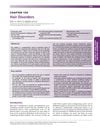 November 2019 in “Harper's Textbook of Pediatric Dermatology”
November 2019 in “Harper's Textbook of Pediatric Dermatology” Understanding normal hair growth and loss in children is key to diagnosing and treating hair disorders.
 November 2019 in “Harper's Textbook of Pediatric Dermatology”
November 2019 in “Harper's Textbook of Pediatric Dermatology” The document is a detailed medical reference on skin and genetic disorders.
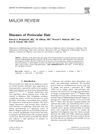 7 citations
,
July 2011 in “Survey of Ophthalmology”
7 citations
,
July 2011 in “Survey of Ophthalmology” The document concludes that periocular hair disorders have various causes and treatments, and proper evaluation by specialists is important for management and prognosis.
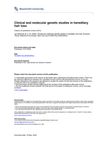
Researchers found a genetic link for hereditary hair loss but need more analysis to identify the exact gene.
 6 citations
,
September 2012 in “Our Dermatology Online”
6 citations
,
September 2012 in “Our Dermatology Online” Retinoids are effective for various skin conditions and hair loss but have serious side effects, so low doses are recommended.







